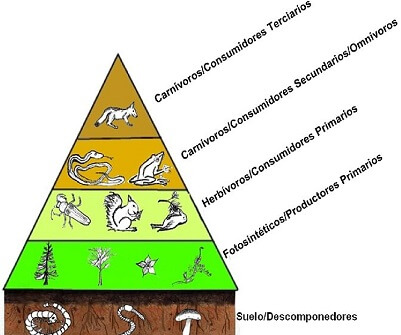Trophic levels in an ecosystem
The trophic levels are each sets of an ecosystem organisms obtained matter and energy in the same manner, thus occupying a place equivalent in trophic chains.
The energy that living beings need to carry out vital functions (nutrition, relationship and reproduction) comes from the Sun. Plants are in charge, through photosynthesis, of transforming inorganic matter into organic matter. This matter and energy will pass to the rest of the organisms in the ecosystem, such as herbivorous and carnivorous animals. Finally, the organisms decomposers will be responsible for breaking down the organic matter into inorganic, closing the cycle so that it can restart.
Therefore, we can distinguish three trophic levels:
- Producing organisms (autotrophs).
- Consuming organisms (herbivores, carnivores, scavengers).
- Decomposing and transforming organisms (decompose organic matter into inorganic).

By Roddelgado (Own work) [CC BY-SA 4.0], via Wikimedia Commons
Interactive activity: Trophic levels.